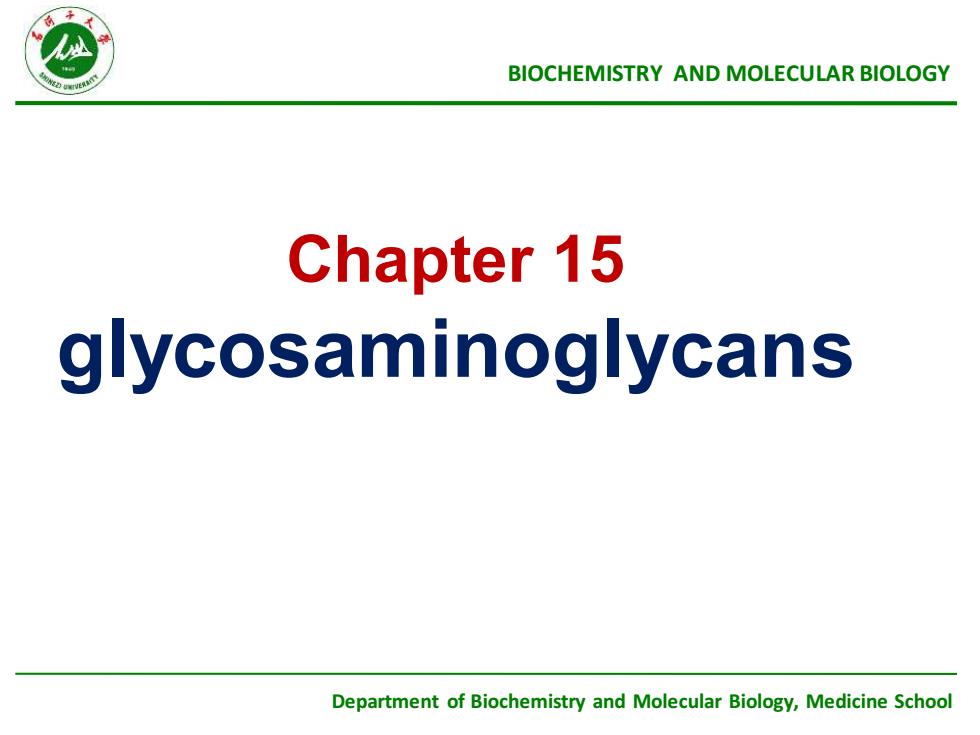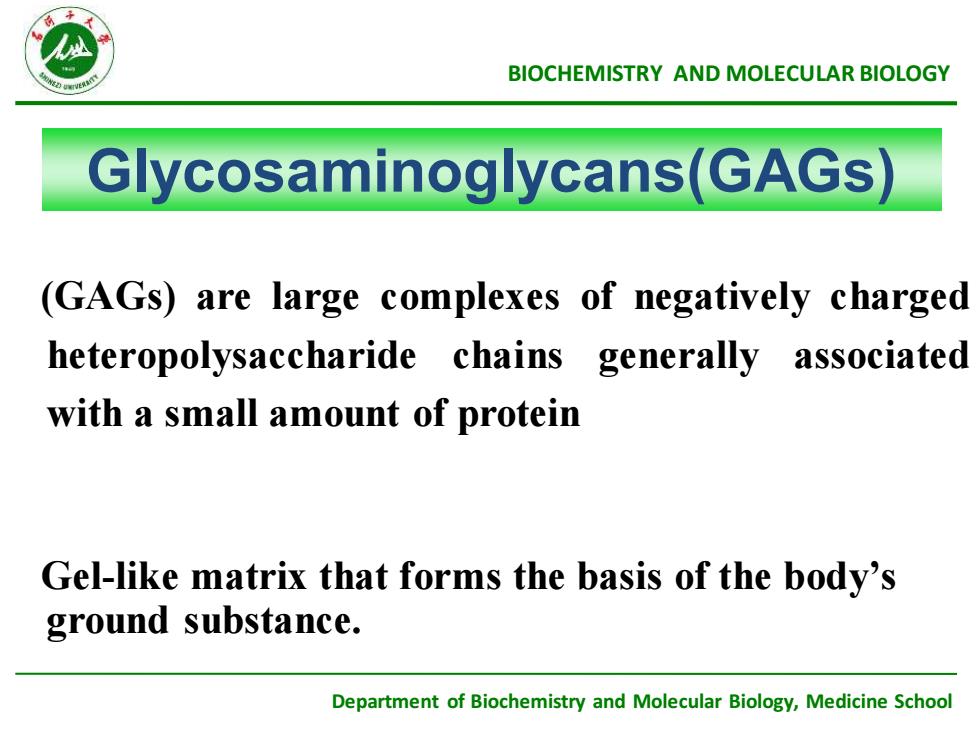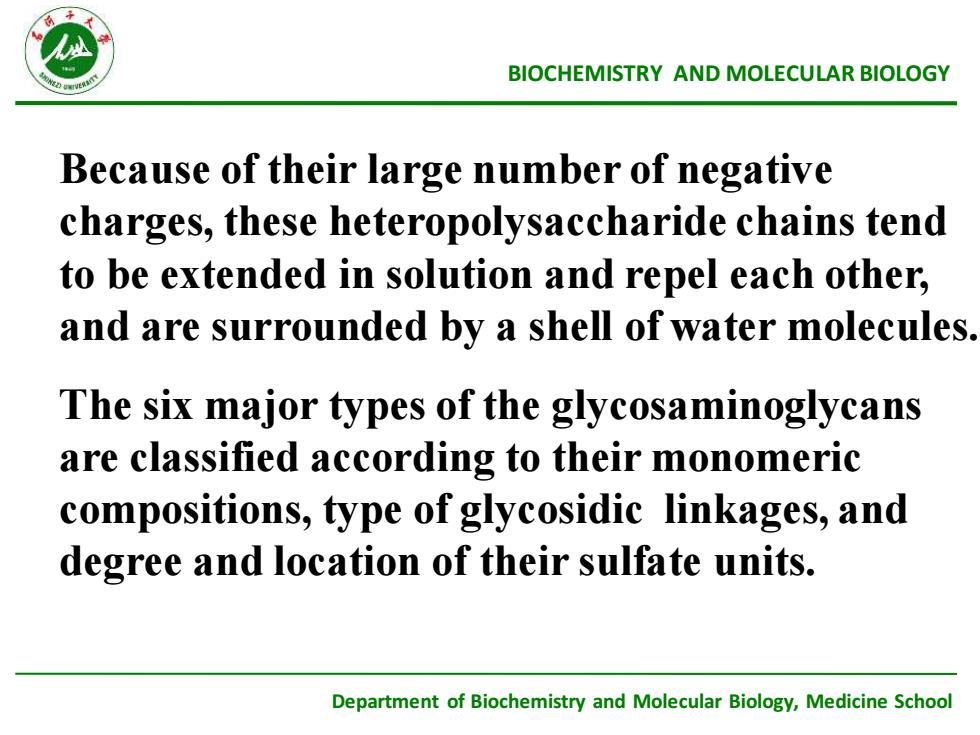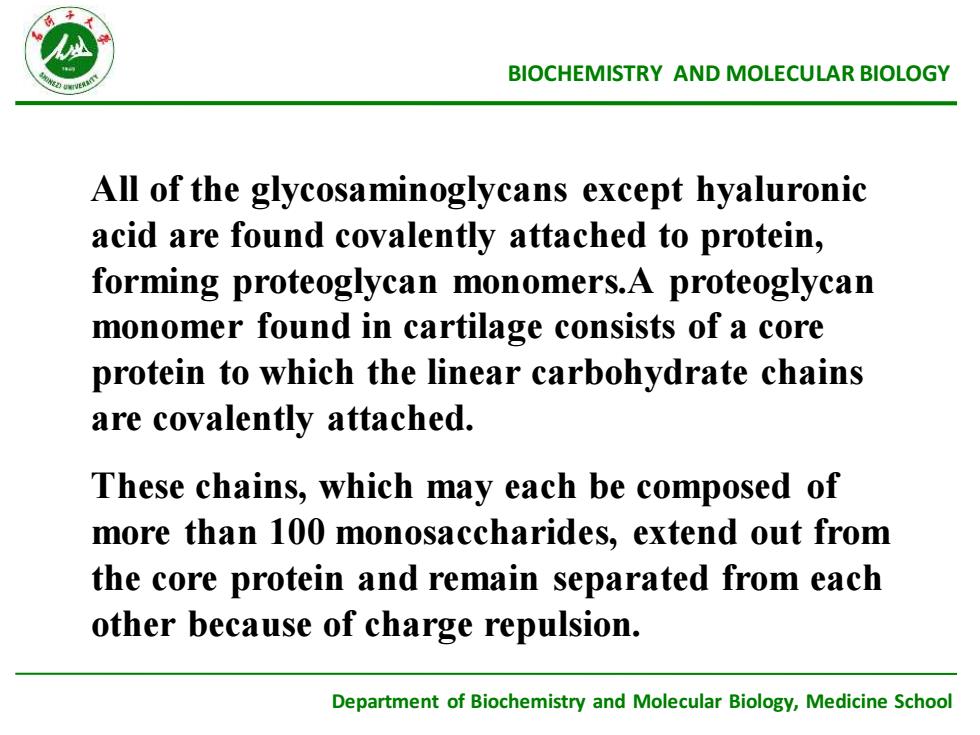
BIOCHEMISTRYANDMOLECULARBIOLOGYChapter 15glycosaminoglycansDepartment of Biochemistry and Molecular Biology,Medicine School
Department of Biochemistry and Molecular Biology, Medicine School BIOCHEMISTRY AND MOLECULAR BIOLOGY Chapter 15 glycosaminoglycans

BIOCHEMISTRYANDMOLECULARBIOLOGYGlycosaminoglycans(GAGs)(GAGs) are large complexes of negatively chargedheteropolysaccharide chainsgenerally associatedwith a small amount of proteinGel-like matrix that forms the basis of the body'sground substance.Department of Biochemistry and Molecular Biology,Medicine School
Department of Biochemistry and Molecular Biology, Medicine School BIOCHEMISTRY AND MOLECULAR BIOLOGY (GAGs) are large complexes of negatively charged heteropolysaccharide chains generally associated with a small amount of protein Gel-like matrix that forms the basis of the body’s ground substance. Glycosaminoglycans(GAGs)

BIOCHEMISTRYANDMOLECULARBIOLOGYStructureofglycosaminoglycansGlycosaminoglycans are long, in most casesunbranched, heteropolysaccharide chains generallycomposed of a repeating disaccharide unitlacidicsugar amino sugarnDepartment of Biochemistry and Molecular Biology,Medicine School
Department of Biochemistry and Molecular Biology, Medicine School BIOCHEMISTRY AND MOLECULAR BIOLOGY Glycosaminoglycans are long, in most cases unbranched, heteropolysaccharide chains generally composed of a repeating disaccharide unit[acidic sugar amino sugar]n Structure of glycosaminoglycans

BIOCHEMISTRYANDMOLECULARBIOLOGYBecause of their large number of negativecharges, these heteropolysaccharide chains tendto be extended in solution and repel each other,and are surrounded by a shell of water molecules.The six major types of the glycosaminoglycansare classified according to their monomericcompositions, type of glycosidic linkages, anddegree and location of their sulfate units.Department of Biochemistry and Molecular Biology,Medicine School
Department of Biochemistry and Molecular Biology, Medicine School BIOCHEMISTRY AND MOLECULAR BIOLOGY Because of their large number of negative charges, these heteropolysaccharide chains tend to be extended in solution and repel each other, and are surrounded by a shell of water molecules. The six major types of the glycosaminoglycans are classified according to their monomeric compositions, type of glycosidic linkages, and degree and location of their sulfate units

BIOCHEMISTRYANDMOLECULARBIOLOGYAll of the glycosaminoglycans except hyaluronicacid are found covalently attached to protein,forming proteoglycan monomers.A proteoglycanmonomer found in cartilage consists of a coreprotein to which the linear carbohydrate chainsare covalently attached.These chains, which may each be composed ofmore than 1o0 monosaccharides, extend out fromthe core protein and remain separated from eachother because of charge repulsion.Department of Biochemistry and Molecular Biology,Medicine School
Department of Biochemistry and Molecular Biology, Medicine School BIOCHEMISTRY AND MOLECULAR BIOLOGY All of the glycosaminoglycans except hyaluronic acid are found covalently attached to protein, forming proteoglycan monomers.A proteoglycan monomer found in cartilage consists of a core protein to which the linear carbohydrate chains are covalently attached. These chains, which may each be composed of more than 100 monosaccharides, extend out from the core protein and remain separated from each other because of charge repulsion